Years of service 1861–1865 Name John Imboden | Other work lawyer, writer Rank Brigadier General | |
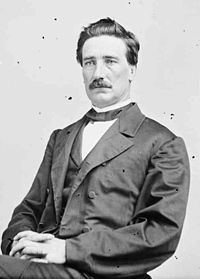 | ||
Battles/wars American Civil WarFirst Battle of ManassasGettysburg CampaignValley Campaigns of 1864 Education Washington and Lee University Battles and wars First Battle of Bull Run, Gettysburg Campaign, Valley Campaigns of 1864, American Civil War Similar People William E Jones, Stonewall Jackson, George Meade, Robert E Lee, Erastus B Tyler | ||
John D. Imboden (Hollywood Cemetery)
John Daniel Imboden (; February 16, 1823 – August 15, 1895), American lawyer, Virginia state legislator and a Confederate army general. During the American Civil War, he commanded an irregular cavalry force. After the war, he resumed practicing law, became a writer, and was active in land development founding the town of Damascus, Virginia.
Contents
- John D Imboden Hollywood Cemetery
- Early life and career
- Civil War service
- Postbellum
- Family
- Works
- References
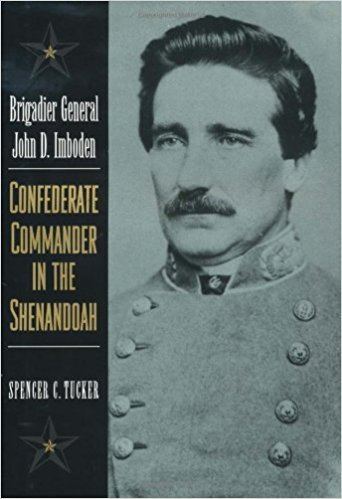
Early life and career
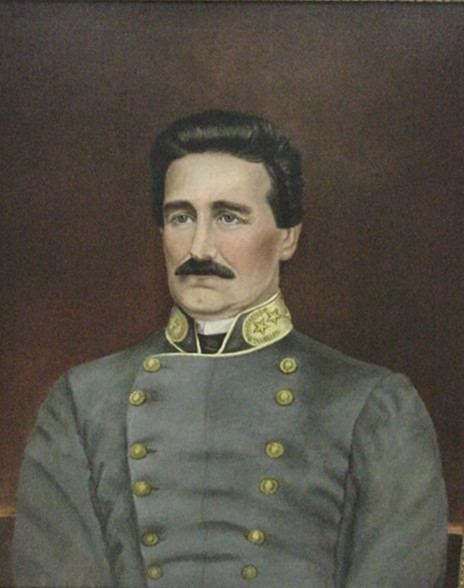
Imboden was born near Staunton, Virginia, in the Shenandoah Valley to George William Imboden (1793-1875) and Isabella Wunderlich who had eleven children. His father participated in the War of 1812. Imboden started his education in a county school, then in 1841-1842 he attended Washington College. He found employment as a teacher at the Virginia School for the Deaf and the Blind in Staunton. Later, he studied law, was admitted to the Virginia bar, and entered into partnership with William Frazier to create a law firm. In December 1844, Imboden became a member of the Staunton Masonic lodge, Number 13, Ancient Free and Accepted Masons (A.F. & A.M.) He enrolled in Virginia's militia and was among founders of the Staunton Light Artillery. Despite having no military training, Imboden received a commission as captain in the Staunton Artillery of the Virginia State Militia on November 28, 1859. As an advocate of state rights, Imboden was twice elected to the House of Delegates of the Virginia General Assembly.
Civil War service
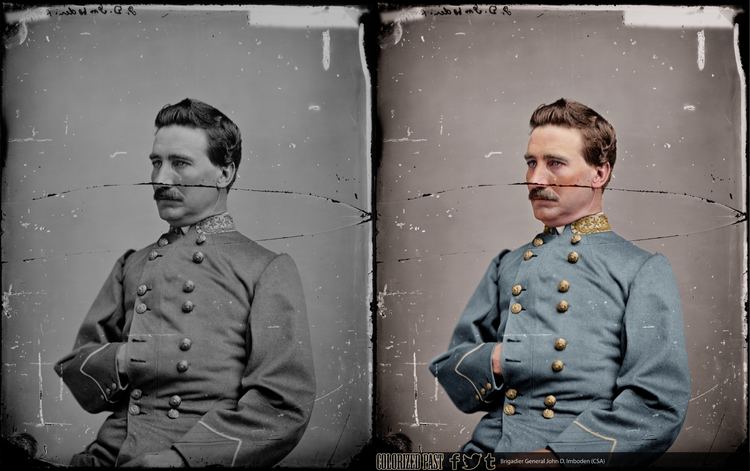
On July 1, 1861, Staunton Light Artillery, with its four bronze, 6-pounder guns and 107 officers and men, was mustered in the Confederate States Army. Imboden commanded the unit during the capture of Harpers Ferry. While commanding his artillery battery at the First Battle of Bull Run, Imboden perforated his left eardrum firing an artillery piece, causing subsequent deafness in that ear. He fought with Maj. Gen. Thomas J. "Stonewall" Jackson in the Valley Campaign at Cross Keys and Port Republic. On September 9, 1862, Imboden left the artillery to recruit a battalion of partisan rangers and was promoted to colonel of the 62nd Virginia Mounted Infantry (1st Partisan Rangers).He was promoted to brigadier general on January 28, 1863.

Along with Brig. Gen. William E. "Grumble" Jones, Imboden led the famous Jones-Imboden Raid of 3,400 partisan rangers into northwestern Virginia, destroying rail track and bridges of the Baltimore and Ohio Railroad. During the raid he also captured thousands of horses and heads of cattle and ruined the petroleum fields in the Kanawha Valley. This raid covered 400 miles (640 km) in 37 days. In the Gettysburg Campaign, Imboden's brigade served under Maj. Gen. J.E.B. Stuart as the rearguard for Gen. Robert E. Lee's movement north through the Shenandoah Valley. (His brigade did not participate in Stuart's foray away from Lee's army, but instead raided the Baltimore and Ohio Railroad between Martinsburg, West Virginia, and Cumberland, Maryland.)
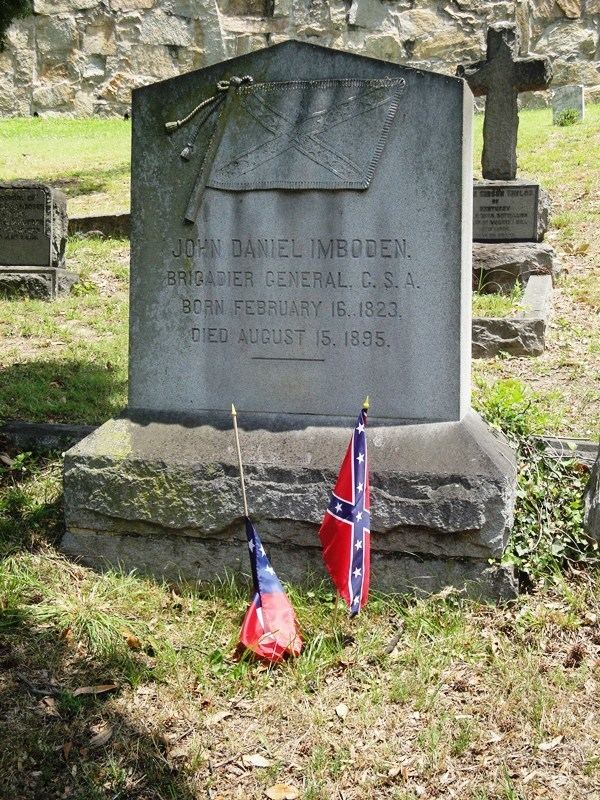
During the Battle of Gettysburg, Imboden's men stayed in the rear and guarded ammunition and supply trains in Chambersburg, Pennsylvania. During the Confederate retreat, Imboden was in charge of escorting the wagon trains of thousands of wounded soldiers back to Virginia. On July 6, 1863, the Potomac River was flooding at Williamsport, Maryland, and Imboden's wagon train was trapped. He put together a defensive force that included an artillery battery and as many of the wounded who could operate muskets. This hastily organized force turned back attacks from Union cavalry generals John Buford and Judson Kilpatrick, saving the wagon train. Robert E. Lee praised Imboden for the way in which he "gallantly repulsed" the Union cavalry.
Returning to the Shenandoah Valley, Imboden responded to a request from General Lee to distract the enemy in his front by leading a raid on the vulnerable Union detachment at Charles Town, West Virginia, on October 18, 1863 at the Battle of Charlestown. Imboden reported,
The surprise was complete, the enemy having no suspicion of our approach until I had the town entirely surrounded. ... To my demand for a surrender Colonel Simpson requested an hour for consideration. I offered him five minutes, to which he replied, 'Take us if you can'. I immediately opened on the buildings with artillery at less than 200 yards, and with half a dozen shells drove out the enemy into the streets, when he formed and fled toward Harper's Ferry.
Union Brig. Gen. Jeremiah Cutler Sullivan soon sent a rescue column from nearby Harpers Ferry and drove Imboden back up the valley. Sullivan reported, "The cavalry came up with the enemy this side of Charlestown, and drove them through the town. Artillery coming up, drove them about 4 miles. A portion of infantry force..., reaching them, the enemy were driven from every position they took, to near Berryville."
Imboden and John C. Breckinridge's forces defeated Union Maj. Gen. Franz Sigel's command at the Battle of New Market on May 15, 1864. He returned to Virginia and commanded a brigade in Maj. Gen. Robert Ransom's cavalry division of the Second Corps of the Army of Northern Virginia under Lt. Gen. Jubal A. Early in the Valley Campaigns of 1864. He was incapacitated by typhoid fever and left the active cavalry service.
Beginning on January 2, 1865, Imboden commanded Camp Millen, Georgia, then the prison camp at Aiken, South Carolina as well as other prison camps in Georgia, Alabama, and Mississippi throughout 1865 until the end of the war. He was paroled in Augusta, Georgia on May 3 of that year.
Postbellum
After the war, Imboden moved to Richmond, Virginia, where he resumed his work as a lawyer, serving first in Richmond and then in Abingdon, the county seat of Washington County. He published several articles and books about the Civil War, and also contributed to The War of the Rebellion: A Compilation of the Official Records of the Union and Confederate Armies (128 vols., 1880-1901). Imboden became a vocal advocate of the development of Virginia's natural resources and transportation infrastructure. He published in 1872 a pamphlet, The Coal and Iron Resources of Virginia: Their Extent, Commercial Value, and Early Development Considered. Around 1875, he moved to southwestern Virginia where he hoped to mine coal and iron ore deposits. He founded a town of Damascus, Virginia, which became a lumber center in the late 19th and early 20th century. In 1876, he became a commissioner of the Centennial International Exposition in Philadelphia, Pennsylvania, and in 1893, he was a commissioner of the World's Columbian Exposition in Chicago.
He died in Damascus in 1895, and is buried in the Generals section of Hollywood Cemetery in Richmond, Virginia.
Family
During his life, Imboden was married five times; five out of his nine children were alive at the time of his death in 1895. On June 16, 1845, Imboden married Eliza "Dice" Allen McCue, who was a daughter of Colonel Franklin McCue. The Imbodens built a house in Staunton which they called the "Ingleside Cottage". They had four children, one died before reaching three years. On December 23, 1857, his wife of twelve years died. On May 12, 1859, Imboden married Mary Wilson McPhail, who gave birth to three children. Later, he married Edna Porter, then Anna Lockett, and finally Florence Crockett.
